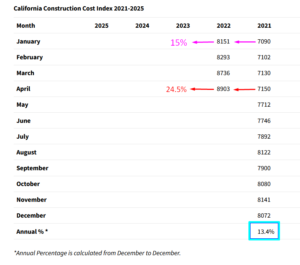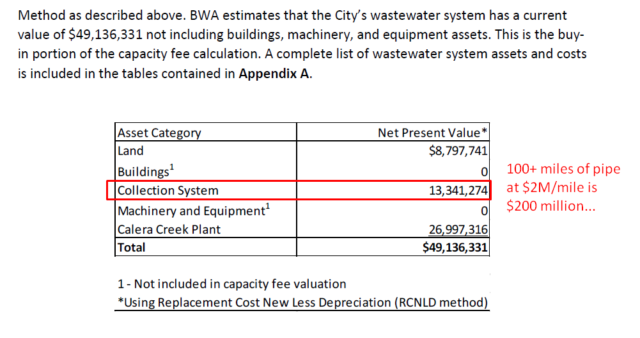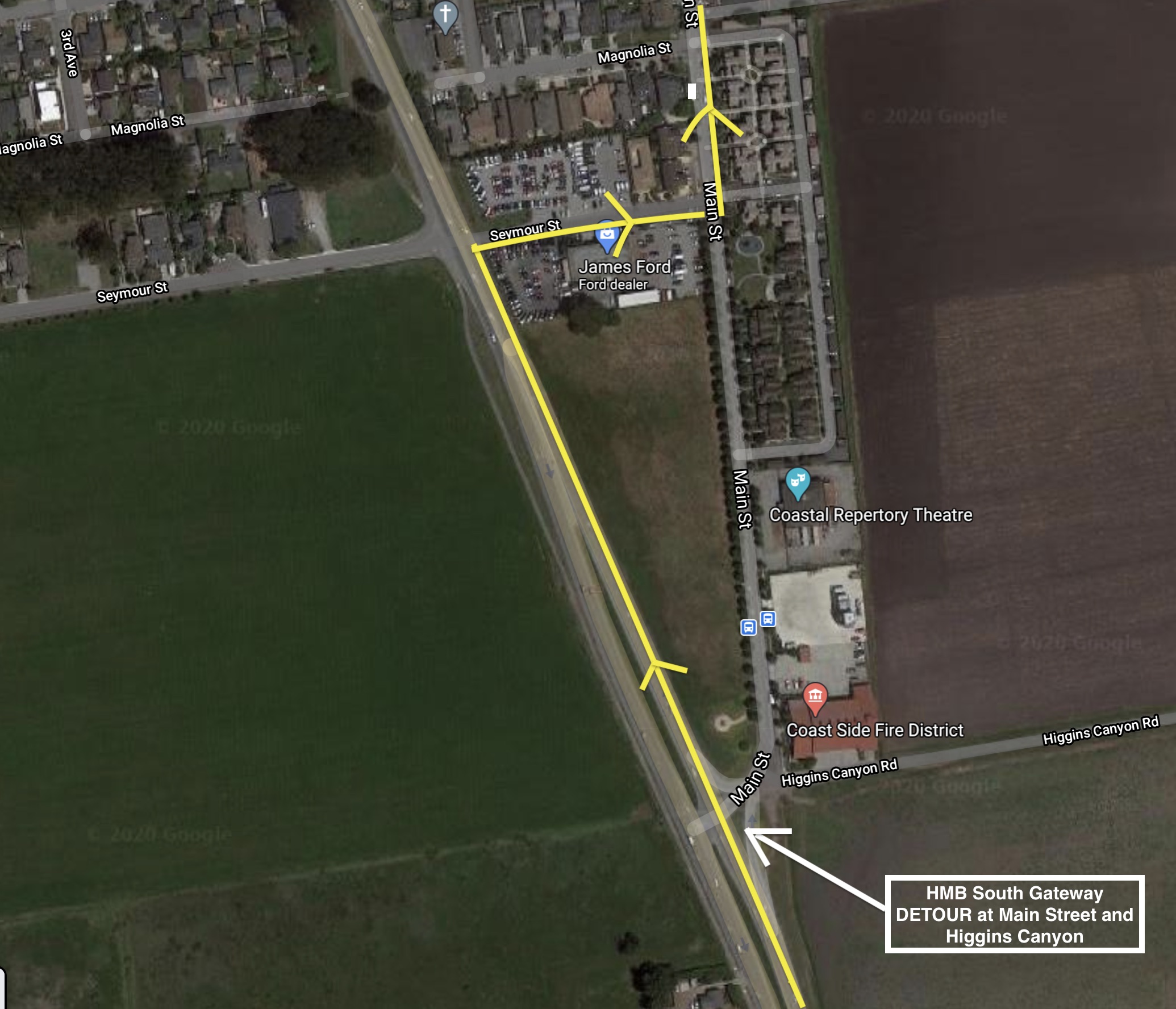|
Getting your Trinity Audio player ready...
|
OWN VOICE. ~ InPerspective by Gregg Dieguez —
If you recall the fable, King Canute was the one who told the tide to stop coming in. It didn’t work. Pacifica’s governance is attempting the same thing, history be darned. There’s a hearing/vote on May 9th Pacificans should attend…
Footnotes: to use, click the bracketed number and then click your browser Back button to return to the text where you were reading.
Images: Click to enlarge for improved readability in a new window.
Recent historians claim that the fable was incorrect, and that Canute was really trying to prove that his kingly powers could NOT govern natural forces. But the Real Estate interests governing Pacifica seem intent on spending whatever it takes to hold back sea level rise, in this case in the Sharp Park area, rather than relocate critical infrastructure to a more sustainable location for the longer term. As a result, the City risks doing the project twice, and it doesn’t have King Canute to pay for it.
Here are some questions that should be asked and answered before adopting the Beach Boulevard Infrastructure Resiliency Project (BBIRP) and related $125 million infrastructure projects[1] outlined by the city. Some of these questions come from concerned (outraged?) Pacificans….
1. Why are we building a $40M seawall instead of relocating the infrastructure to high ground which will suffice for much longer?
2. Why are all the residents of the City being asked to pay for a seawall that only benefits a few hundred homes? Why isn’t there a Special Assessment District which funds the specific infrastructure desired by and required for those homes and businesses (?and golf course?).
3. Are they asking for the right amount of money?
4. I am not sure how the consultant came up with the cost of no action (which I guess is not a real Managed Retreat plan?)
5. If we just had a rate increase to fund the $20M wet weather equalization basin, and that is paid for, how come rates aren’t coming down now?
6. What is the Return On Investment for the several capital improvement projects planned? This is not shown.
7.Why is the Design Storm used in the collection system analysis only 3.74″ of rainfall, when we have several local storms in excess of 6″ in the past few months? Could we be under-engineering, again, and does this explain why the new equalization basin didn’t prevent flooding in Linda Mar this past October?
8. Why wasn’t an alternative of Managed Retreat in various forms included in the analysis?
To me, the answer here is twofold: A) because the City Council is changing the LCP to prevent/avoid managed retreat and preserve the real estate “inventory” upon which they make their profits. and B) the study assumes the Coastal Commission will endorse the new LCP. I think not. The unintended consequences of coastal armoring are well documented, and visible in Half Moon Bay, among many other places, including IIRC a failed armoring attempt under Pacifica’s cliffs. I’d be concerned Pedro Point could suffer increased erosion as a result of armoring in Sharp Park. I believe we will be back to square one after the Coastal Commission rules on the LCP, but it may take your involvement to ensure that reconsideration happens.

9. With public works construction cost inflation of 3.5% over the last 23 years, how is a 3.5% rate increase even a sustainable increase at all? Recent California Construction Cost Index data (<< chart at left) shows 13.1% inflation in 2021, and an astounding most recent April-April increase of 24.5%!
10. The full cost of the City’s proposed spend is much more than $125M. Anyone with a mortgage calculator can see that a 4% bond over 30 years adds 72% to the cost of each asset. Add in the 1.5% Issuance Costs and $125M would turn into $216M. Of course, the City is initially proposing to borrow for only $83,959,000 of the total need, so borrowing costs atop that amount would be $61M, bringing the $125M to an estimate of $186M for these new projects. Again, these figures are assuming only a 3% inflation factor in the recent sewer rate studies, which I’m seriously doubting.

11. Finally, how did we GET here? Clearly Pacificans haven’t been paying enough in sewer fees over the years to build up reserves sufficient to fund replenishment of their sewer assets. But it goes further than that. The charges for New Joiners have been an absurd $3,825 per connection until the current study. The recent Bartle Wells capacity fee study now proposes raising them to $12,391. However, that study appears to have two key flaws:
A. It values all the pipes at $13M. In spite of the fact that I can cite several other agencies[2] claiming a 2019 cost of $1.33 to $2M per mile for sewer pipes – including Pacifica’s own Collection System manager! With recent inflation, that $1.3M number from 2019 is likely now $1.6M. At any rate, the current replacement cost of 101 to 105 miles of Pacifica’s sewer pipes is certainly over $150M, and probably even over $200M by the time the funds are disbursed.
B. It uses $0 values for Buildings and Equipment. Where, for example, is the $20M wet weather equalization basin recently completed? Everything in the sewer enterprise is part of the asset foundation New Joiners will utilize and rely on. Everything. That plant has to be between $100M and $200M in current replacement cost, not $27M. Heck, just changing the UV “light bulbs” used to sterilize effluent is going to be $11M. And by the way, the plant WILL need to be replaced someday. And the plant that replaces it will need to be replaced. And so on and so on. In Public Works, “once an asset, always an asset” and the failure to recognize the perpetual nature of asset replenishment is what has the entire Nation behind the 8-ball in its infrastructure. Add to those numbers the inflation in replacement cost that affects Every Single Asset Every Single Year, and you have a perpetual problem that requires perpetual financial diligence to manage.
Bottom line, Pacifica probably has $300M – $400M in sewer assets. Spread over 12,719 ‘meter equivalent’ connections, that means a typical household rests on an asset foundation of $23,587-31,449 in sewer assets. To date, Pacifica has been charging only $3,825 or less, per connection to join the club for decades. They are now proposing to raise it only to $12,391, which IMHO is about half of what it should be. Undercharge new joiners for decades, and that is how you fail to accumulate replenishment reserves and become forced to borrow. For example, if the last 6,000 new connections had paid (in today’s dollars) an extra $20,000 each, the City would now have reserves of $120 million with which to address… oh, wait! That’s almost EXACTLY what they say they need now. So, bottom line, Growth hasn’t paid for itself, and you are now being sent the bill.
This isn’t the Conclusion:
There are many more, and more detailed, questions to be asked and answered. I know residents are forwarding them to the City now. It is clear that Pacifica needs to replenish its sewer system. Rates and charges of all types need to be higher. It is much less clear WHERE improvements should be, and who is going to PAY for them. In addition, there will clear tensions between the interests of different neighborhoods in the City, and between funds the City currently spends on social programs and its needs for infrastructure to remain a functioning civilization. It will take future articles to fully understand this issue, and to consider whether the leadership of Pacifica is itself up to the task they face.
FOOTNOTES:
[1] Cost of infrastructure projects.
Several sources for this, for example item 3.2 page 10 of BARTLE WELLS ASSOCIATES Wastewater Capacity Fee Study, Feb. 4, 2022.
[2] Cost per mile of public works pipes. See for example the SMC LHMP filings for MWSD and CCWD based on 2019 dollars.
More From Gregg Dieguez ~ InPerspective
Mr. Dieguez is a native San Franciscan, longtime San Mateo County resident, and semi-retired entrepreneur who causes occasional controversy on the Coastside. He is a member of the MCC, but his opinions here are his own, and not those of the Council. In 2003 he co-founded MIT’s Clean Tech Program here in NorCal, which became MIT’s largest alumni speaker program. He lives in Montara. He loves a productive dialog in search of shared understanding.







Gregg,
At last night’s MWSD meeting, Ric Lohman reported that LAFco was discussing the City of East Palo Alto vs the Sanitary District that serves East Palo Alto. The District had been trying to keep rates low for the Users, but now, the City seems to be pressured by Developers to expand the capacity and spread the burden on all ratepayers instead of the “New Joiners” who would create the need for an expansion. I’m so glad that MWSD charges the “New Joiners” their fair share, rather than spreading the costs over all ratepayers who have been towing the line all these past years!
The pro-housing developers pushed for new Laws (SB 10) that promte density. Too bad, so Sad. More cars on the road and more flushes, but the developers want their cake and eat it too, and not have to pony up to build their High Density units on their own dime. Put the burden on the existing rate payers, instead. So Wrong!